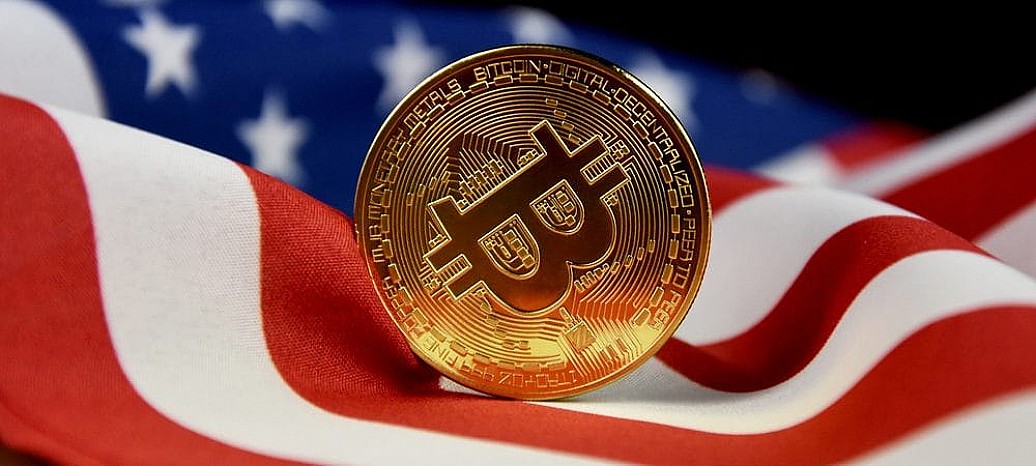Could the U.S. Election Be the Key to Bitcoin’s Next Big Surge?
23.09.2024 19:30 2 min. read Kosta Gushterov
Bitcoin has been climbing steadily, with some of its momentum tied to recent moves by the Federal Reserve.
Many analysts are optimistic about a rally in October, a month often associated with positive trends for Bitcoin. The upcoming U.S. presidential election is also expected to have a significant impact on the crypto market, with some suggesting the outcome could either fuel or hinder Bitcoin’s growth.
Predictions are divided on how the election results might influence Bitcoin. Analysts believe that a Trump win could push Bitcoin prices even higher, while a victory for Kamala Harris might lead to a dip.
At present, Bitcoin remains above $60,000, and Bernstein analysts have highlighted several reasons for the recent surge, including Harris’ remarks on digital assets, which marked her first direct public acknowledgment of the crypto sector.
While both Trump and Harris have expressed support for cryptocurrency, Trump’s strong push to make the U.S. a leader in the space is seen as more favorable for Bitcoin’s outlook. Analysts speculate Bitcoin could reach $90,000 if Trump wins, while a Harris win might cause a pullback to $30,000.
Other contributing factors behind Bitcoin’s current rally include rising demand from spot Bitcoin ETFs, the Federal Reserve’s recent interest rate cuts, a recovery in Bitcoin mining, and major Bitcoin sales concluding. Additionally, a potential shift toward more lenient monetary policies and a weakening dollar are also helping drive Bitcoin’s bullish momentum.
-
1
Bitcoin: What to Expect After Hitting a New All-time High
10.07.2025 14:00 2 min. read -
2
Peter Brandt Issues Cautious Bitcoin Warning Despite Bullish Positioning
10.07.2025 20:00 2 min. read -
3
Vanguard Now Owns 8% of Michael Saylor’s Strategy, Despite Calling BTC ‘Worthless’
15.07.2025 17:09 2 min. read -
4
Standard Chartered Becomes First Global Bank to Launch Bitcoin and Ethereum Spot Trading
15.07.2025 11:00 1 min. read -
5
What’s The Real Reason Behind Bitcoin’s Surge? Analyst Company Explains
12.07.2025 12:00 2 min. read
Ethereum Spot ETFs Dwarf Bitcoin with $1.85B Inflows: Utility Season in Full Swing
Ethereum is rapidly emerging as the institutional favorite, with new ETF inflow data suggesting a seismic shift in investor focus away from Bitcoin.
Ethereum Flashes Golden Cross Against Bitcoin: Will History Repeat?
Ethereum (ETH) has just triggered a golden cross against Bitcoin (BTC)—a technical pattern that has historically preceded massive altcoin rallies.
Bitcoin Banana Chart Gains Traction as Peter Brandt Revisits Parabolic Trend
Veteran trader Peter Brandt has reignited discussion around Bitcoin’s long-term parabolic trajectory by sharing an updated version of what he now calls the “Bitcoin Banana.”
Global Money Flow Rising: Bitcoin Price Mirrors Every Move
Bitcoin is once again mirroring global liquidity trends—and that could have major implications in the days ahead.
-
1
Bitcoin: What to Expect After Hitting a New All-time High
10.07.2025 14:00 2 min. read -
2
Peter Brandt Issues Cautious Bitcoin Warning Despite Bullish Positioning
10.07.2025 20:00 2 min. read -
3
Vanguard Now Owns 8% of Michael Saylor’s Strategy, Despite Calling BTC ‘Worthless’
15.07.2025 17:09 2 min. read -
4
Standard Chartered Becomes First Global Bank to Launch Bitcoin and Ethereum Spot Trading
15.07.2025 11:00 1 min. read -
5
What’s The Real Reason Behind Bitcoin’s Surge? Analyst Company Explains
12.07.2025 12:00 2 min. read


